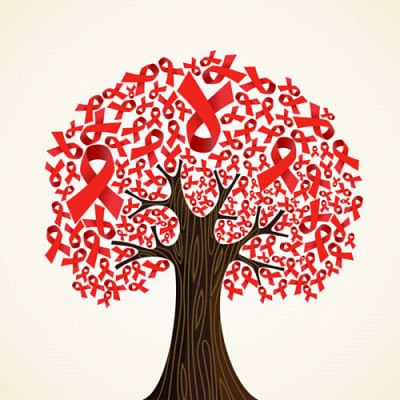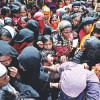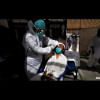Time to look back at the bridges we've crossed

Every year World AIDS Day is observed on December 1, established by the World Health Organization in 1988 to bring people together in the fight against HIV and raise awareness of the epidemic that shook the world. This year, World AIDS Day will be marking its 30th anniversary and the theme is "Know Your Status". This campaign aims to intensify HIV testing, which will enable people to make right and informed choices of treatment and prevention. World AIDS Day is an occasion to come together and renew our commitment to fight the disease, to analyse our success and what more needs to be done to achieve the goal to end the epidemic by 2030. On this day we wear red ribbons and revisit strategies in our fight against HIV (human immunodeficiency virus).
Undoubtedly massive achievement has been made in HIV and AIDS (acquired immune deficiency syndrome) response since we first heard about the "mysterious virus" in the 1980s. According to the UNAIDS report (2018) "the number of AIDS-related deaths is the lowest this century, with fewer than 1 million people dying each year from AIDS-related illnesses". The access to affordable antiretroviral treatment has contributed to this success. "Now a record 21.7 million people are on treatment—a net increase of 2.3 million people since the end of 2016" (UNAIDS data 2018).
But the history of HIV and AIDS epidemic is one of fear, deaths, personal trauma and a long fight for affordable medicines. It required a handsome quintessential Hollywood actor Rock Hudson to die (1985) for the whole world to take notice of this epidemic. How can we forget that we lost flamboyant rockstar Freddie Mercury to this "mysterious virus"? The tragic death of high-profile personalities in rich countries brought attention to the epidemic that was killing millions of men, women and children from all walks of life around the world. Some of my colleagues were attending funerals of their friends almost every week in the 80s. They said that their friends were "dropping like flies".
Like many people of my generation born in Bangladesh, I was not aware of the growing grassroots movement in the 1980s and 1990s that was seeking to deal with an epidemic that appeared unmanageable and untreatable. It was much later, when I was studying public health that I became aware of the broader engagement of stakeholders in the HIV movement, and heard about some more great examples of HIV response, such as the global shaming effort that brought about the reduction in the cost of anti-retroviral drugs—an intervention that saved millions of lives.
Current treatment costs for HIV can be as low as around USD 100 for a patient per year. This was not the case 25 years ago. The cost of treatment for HIV in 1994-95 was around USD 8,000-10,000 the (only available drug was azidothymidine AZT). The high cost of AZT was one of the major obstacles preventing access to treatment. It is said that AZT was the most expensive prescription drug up to that time. The unprecedented drop in price of medicines emerged from a confluence of grassroots movement, broader political engagement and, eventually, damage control by large pharmaceutical companies whose reputation was on the line—five pharmaceutical companies negotiating with UNAIDS for an unprecedented reduction in the price of anti-retroviral drugs in developing countries. Soon after, generic manufacturer such as Cipla in India began producing generic HIV medicines for developing countries that further brought down the drug price. The World Trade Organization's (WTO) Doha Declaration allowed developing countries to manufacture generic drugs, making treatment more affordable and accessible. In 2001 the United Nations General Assembly called for the creation of a "global fund" to intensify efforts by countries and organisations to fight the spread of HIV through prevention, treatment and care though affordable medication.
Why am I telling this story today? On the occasion of World AIDS Day, I want to cherish the success of a movement that led pharmaceutical companies to allow production of generic drugs. We always hear that the pharmaceutical companies are reluctant to give up the rights of the patent. It was a long struggle to make drugs affordable since US Food and Drug Administration approved AZT as treatment for HIV in 1987, but it showed that voices raised strongly enough can change history. Now the HIV diagnosed patients do not look like Tom Hanks in the film Philadelphia (1993), the first major Hollywood movie to focus on AIDS. Being HIV positive is not a death sentence anymore. Available and affordable treatment has allowed people to live a normal, healthy life.
I am very much aware that the success in combating HIV and AIDS has not reached every part of the world. Many countries still face challenges around access, resources, shortage of healthcare professionals, stigma and discrimination. But today I want to be with my colleagues who were part of the HIV movement. Sometimes we need to look back and see the bridges we crossed, the past that shaped the history of HIV movement, needs to be recognised. On the occasion of World AIDS Day, let's remember the success, let us not allow complacency to set in and take vows to eradicate the disease by 2030. We have a long way to go.
Anindita Roy is a public health specialist, working with an international organisation in Geneva, Switzerland.

 For all latest news, follow The Daily Star's Google News channel.
For all latest news, follow The Daily Star's Google News channel. 








Comments